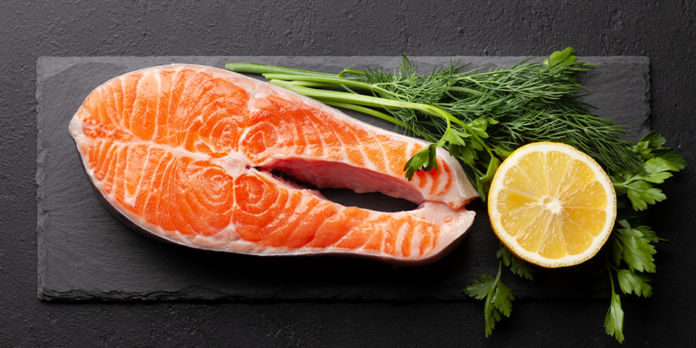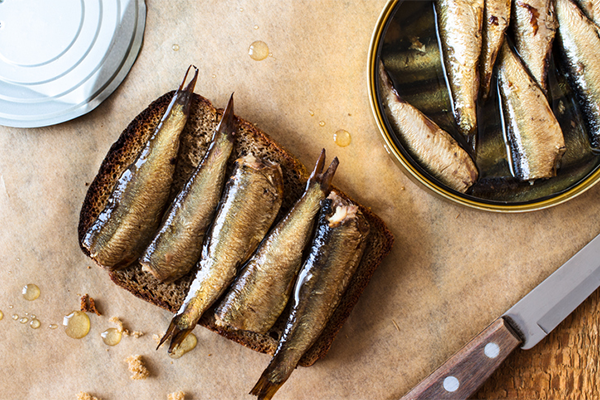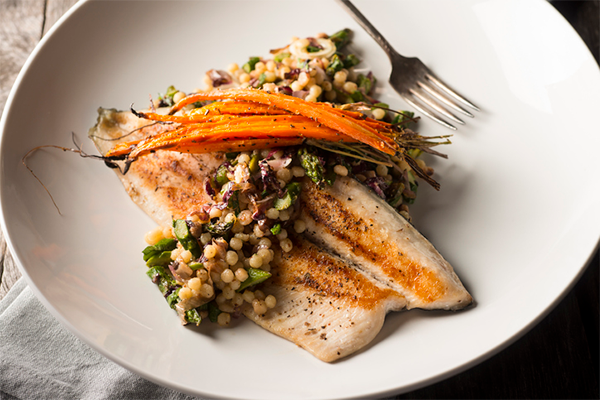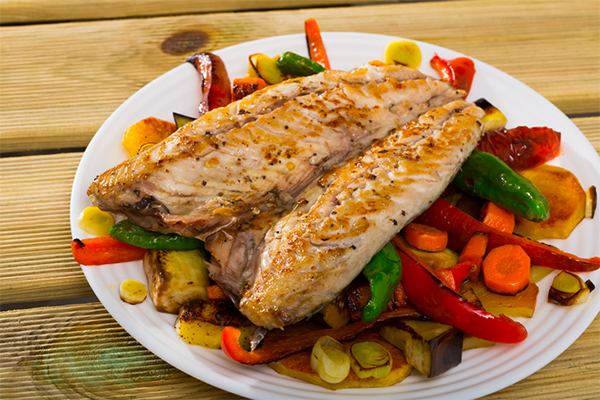If you decided to add more fish to your diet, you’ve made a great choice. These salty swimmers can be a great source of protein and other beneficial nutrients like omega-3s and vitamins and minerals.
However, when shooting for the weekly eight-ounce recommendation set by the U.S. Dietary Guidelines, be mindful that fish absorb compounds like mercury and polychlorinated biphenyls (PCBs) that are found in the sediment of streams and oceans. Fish that are higher up on the food chain are generally higher in mercury, as they eat other contaminated fish.
The FDA and Environmental Protection Agency recommend avoiding these types of fish for their high mercury levels:
- King mackerel
- Marlin
- Orange roughy
- Shark
- Swordfish
- Tilefish
- Bigeye tuna
But among their 50+ “best” and “good” choices of fish, which ones should you consume? To help cast a smaller net around your grocery list, here are five of the healthiest fish to eat when it comes to benefits and sustainability.
1. Salmon
Salmon is a bit of a no brainer when it comes to the best kinds of fish to eat — and, incidentally, one of the best choices of fish out there for brain health. Credit that to high levels of omega-3s, the fatty acids we have in the brain and that are vital for cognitive (i.e. brain memory and performance) and behavioral function.
“These are the kinds of fats that we want,” says Paige Bente, R.D. Especially, she notes, when countering the often high amounts of omega-6s that we can acquire easily from foods like nuts and seeds. Salmon is also a good source of protein and is rich in nutrients like B-vitamins.
And if you see the words “farm-raised” at the seafood counter, fear not. “Farmed salmon is much better today than it was 15 or 20 years ago,” notes Ryan Bigelow, project director at the Conservation Alliance for Seafood Solutions. “The industry is really cleaning up their act with improvements like enclosed tank systems and fewer chemicals in fish feed — it’s becoming a better process overall for the environment.”
2. Mussels
When it comes to the “fish” of the future, mussels might be it. “Mussels thrive in tight spaces — they don’t need much food because they filter the water,” says Bigelow.
The mollusks pack plenty of health benefits, too, starting with protein — each three-ounce portion carries 20 grams, along with high levels of omega-3s to support cognitive function. Plus, they’re a great source of vitamins and minerals, such as iron, selenium, folic acid, and zinc.
What’s more? They have loads of vitamin B12 (nearly 10 times the recommended daily allowance per three-ounce serving), an essential player when it comes to healthy nervous system functioning, red blood cell development, and cognitive performance.
3. Sardines
You may have done your best to avoid these small, oily swimmers throughout childhood, but take our word — it’s time to dive into your fears. That’s because sardines are loaded with the good stuff, including upwards of 178 IU of vitamin D per 3.5-ounce serving — just under one third of what the average American requires on a daily basis.
They’re also rich in calcium, supplying us with approximately 382 milligrams per 100 grams of fish — a whopping third of what we need per day. If you’re still averse to enjoying them on their own, try weaving them into already delicious dishes like a bright kale salad or bucatini pasta, or get creative at the next group gathering by throwing them over passed apps like flaxseed crackers with labneh or avocado toast.
The good news? You can leave the salt in the kitchen — these guys are full of flavor.
4. Rainbow Trout
In terms of sustainability, rainbow trout is a “best choice” fish — so long as it’s farmed in closed tanks, which are held to strict environmental standards and typically see far fewer contaminants than trout in the wild.
Low mercury and contaminant levels make these salmon-relatives a great option for children and pregnant and nursing women, who are encouraged to have 8 to 12 ounces of low-mercury seafood per week, according to the FDA.
Try it with soba noodles, blackened with rice and peas, or smoked in a dip with crackers.
5. Spanish Mackerel
There are plenty of sustainable and eco-friendly options when it comes to Spanish mackerel — not to be confused with king mackerel, which is high in mercury. This oily, omega-3-charged fish is sky-high in vitamin D (about 1000 IU per 100 grams) and monosaturated fat (11 grams per cup), which can have a positive impact on heart health, according to the American Heart Association.
This fish also packs plenty of flavor, meaning preparation can be simple — give it a go alongside roasted beets and carrots, over a bed of basil and chickpeas, or grilled with asparagus salad.





